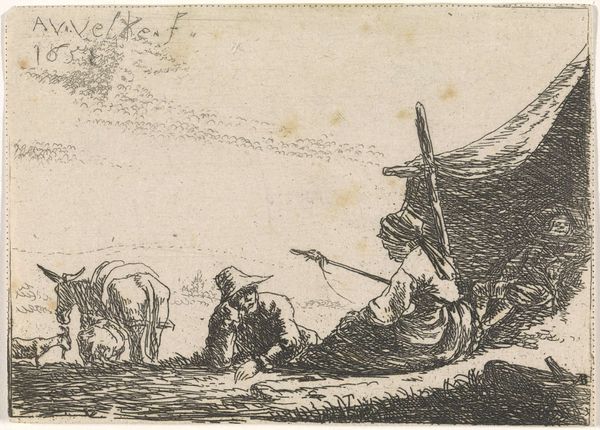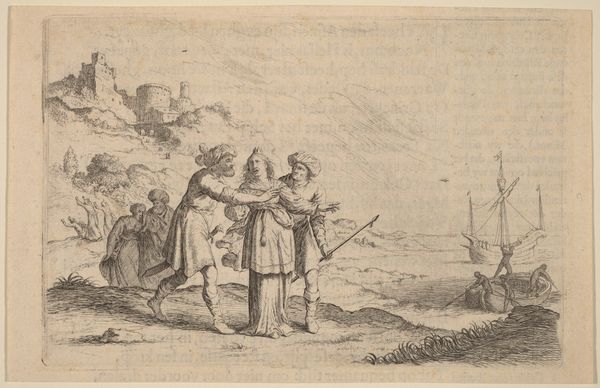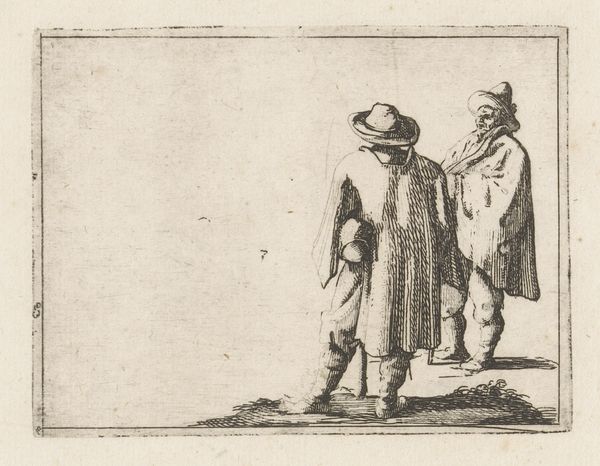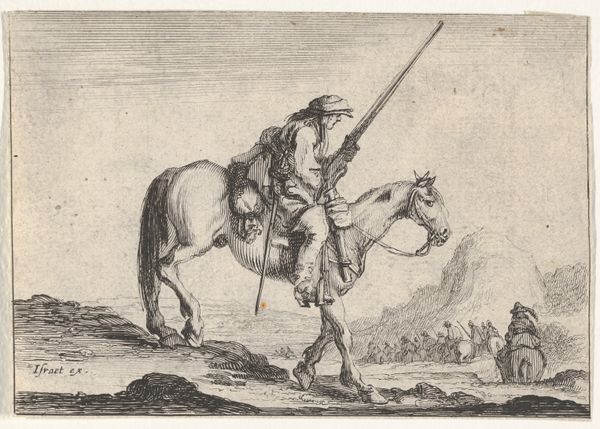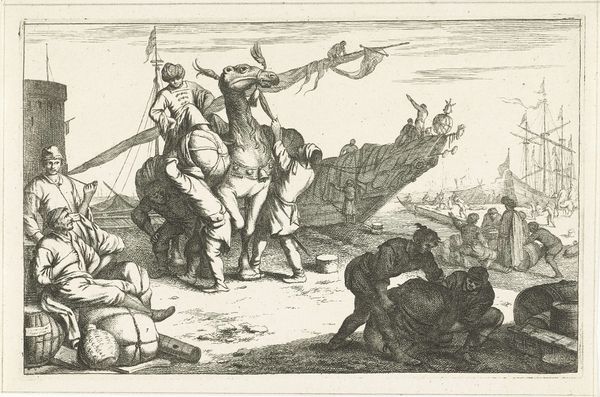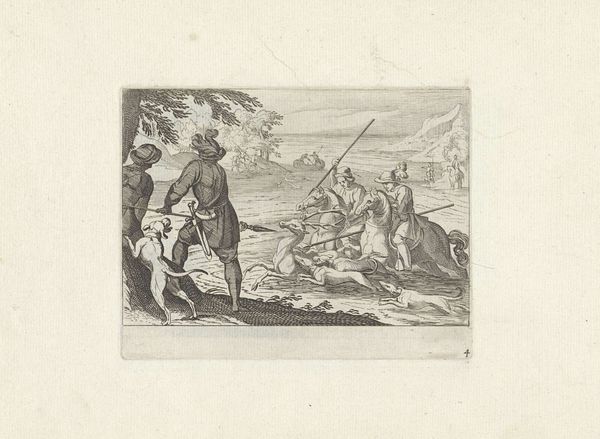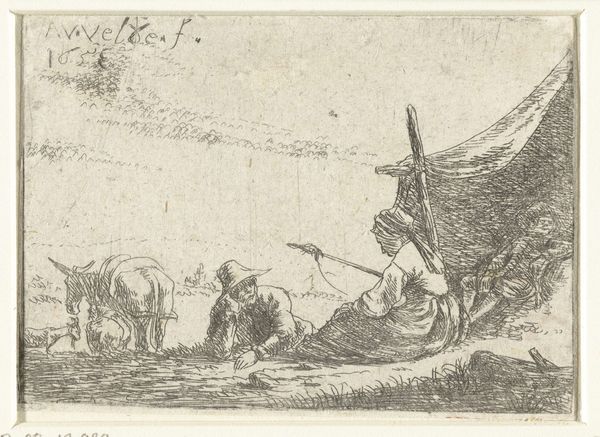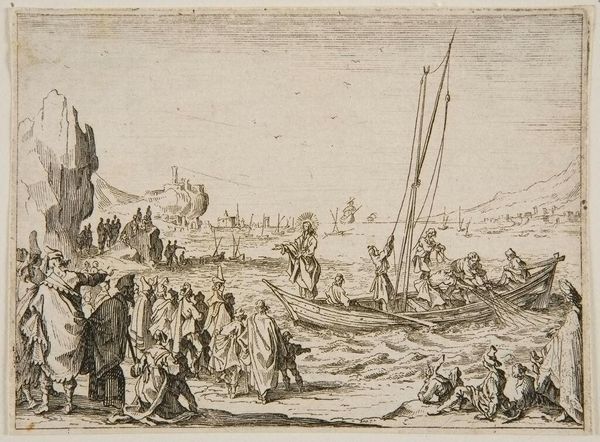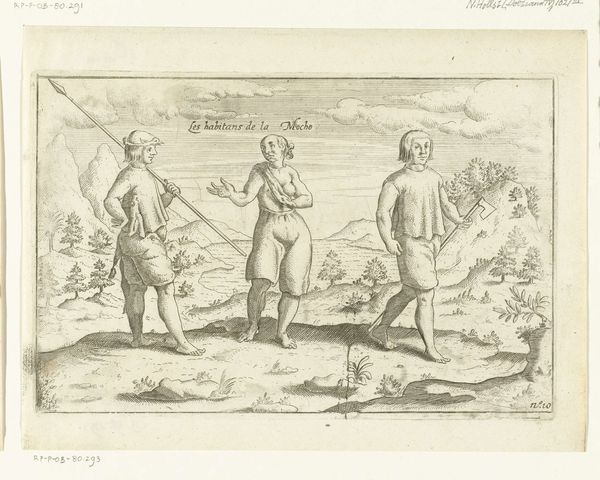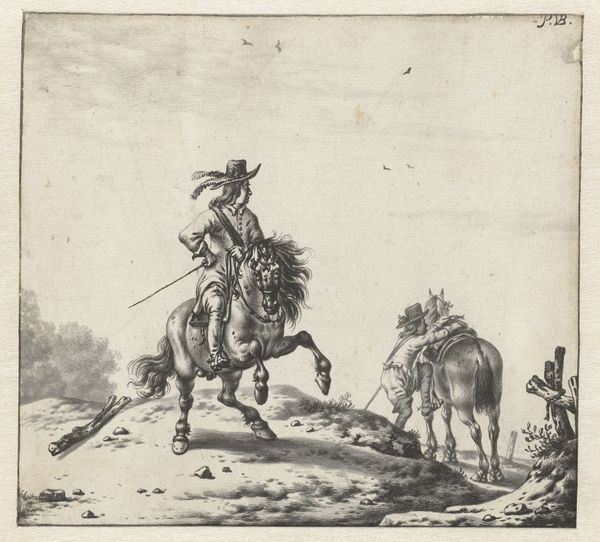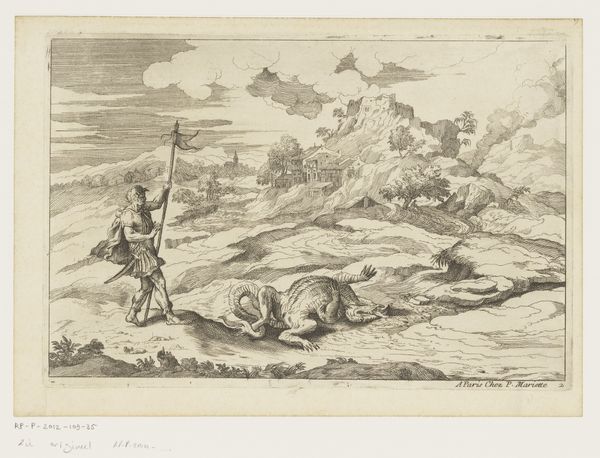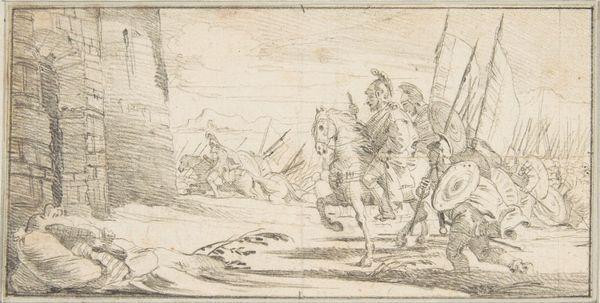
print, etching
#
baroque
# print
#
etching
#
landscape
#
figuration
Dimensions: height 68 mm, width 90 mm
Copyright: Rijks Museum: Open Domain
Editor: This etching, "Konijnenjacht," or "Rabbit Hunt," from around 1620, is by Ercole Bazicaluva. It feels quite stark, doesn't it? The composition seems deliberately asymmetrical. What do you see in the stark arrangement of shapes and textures? Curator: Indeed. Observe how the artist uses the stark contrast of light and shadow. The dark, densely etched foreground, depicting the figures and the rugged terrain, gives way to the almost blank expanse of the sky. Note, as well, how line is deployed as a means of giving weight and volume. Editor: The figures almost blend into the landscape at first glance. Is there something to be gained from a heightened level of detailing or lack thereof? Curator: Precisely! The contrast guides our eyes to scrutinize the use of lines. A significant portion of the composition is, essentially, empty. This negative space emphasizes the detailed rendering of the hunters. Do you notice any specific aspects of how line contributes to an effect of mass in the men, rock, and the horizon, however gestural? Editor: Now that you mention it, the density of etched lines really does give form and substance to the figures. Even in a simple black and white print. I wonder if that negative space is supposed to signal the vastness of nature? Curator: An excellent point. By carefully studying these intrinsic elements of the print – the interplay of light and shadow, the skillful etching technique, the considered use of space – one begins to discern the essence of the artist's vision. Editor: Looking at the details of how Bazicaluva manipulates the elements of the landscape reveals quite a bit. Curator: Precisely; attending to the interplay of textures and graphical volume provides an important access point to interpreting "Konijnenjacht".
Comments
No comments
Be the first to comment and join the conversation on the ultimate creative platform.
